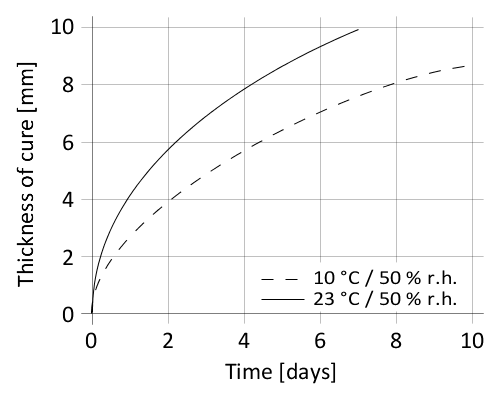Sikaflex®-265
Sikaflex®-265 is a 1-component elastic adhesive for bonding and joint sealing in commercial-vehicle glazing applications. Its excellent weathering resistance makes it very suitable for use in exterior joints. Sikaflex®-265 is compatible with Sika’s black-primerless bonding process. Sikaflex®-265 can be accelerated with Sika’s Booster system.
- Suitable for bonding and sealing
- Passes EN45545-2 R1/R7 HL3
- Good weathering resistance
- Solvent-free
- Low odor
- Very good processing and tooling characteristics
PRODUCT BENEFITS
- Suitable for bonding and sealing
- Passes EN45545-2 R1/R7 HL3
- Good weathering resistance
- Solvent-free
- Low odor
- Very good processing and tooling characteristics
Areas of Application
Sikaflex®-265 is designed for direct glazing applications in both the OEM and repair markets. Owing to its good tooling properties and enhanced weathering stabilization, the product may be used for exterior joints. Seek manufacturer’s advice and perform tests on original substrates before using Sikaflex®-265 on materials prone to stress cracking. Sikaflex®-265 is suitable for experienced professional users only. Tests with actual substrates and conditions have to be performed ensuring adhesion and material compatibility.Product Details
| Chemical base | 1-component polyurethane | |
| Color (CQP001-1) | Black | |
| Cure mechanism | Moisture-curing | |
| Density (uncured) | 1.2 kg/l | |
| Non-sag properties | Good | |
| Application temperature | 10 ─ 35 °C | |
| Skin time (CQP019-1) | 45 minutes A | |
| Curing speed (CQP049-1) | (see diagram) | |
| Shore A hardness (CQP023-1 / ISO 48-4) | 45 | |
| Tensile strength (CQP036-1 / ISO 527) | 6 MPa | |
| Elongation at break (CQP036-1 / ISO 527) | 450 % | |
| Tear propagation resistance (CQP045-1 / ISO 34) | 12 N/mm | |
| Tensile lap-shear strength (CQP046-1 / ISO 4587) | 4.5 MPa | |
| Service temperature (CQP509-1 / CQP513-1) | -40 ─ 90 °C | |
| Shelf life | cartridge / unipack pail | 9 months B 6 months B |
| CQP = Corporate Quality Procedure | A) 23°C / 50 % r.h. | B) storage below 25 °C |
CURE MECHANISM
Sikaflex®-265 cures by reaction with atmospheric moisture. At low temperatures the water content of the air is generally lower and the curing reaction proceeds somewhat slower.

Diagram 1: Curing speed of Sikaflex®-265
CHEMICAL RESISTANCE
Sikaflex®-265 is generally resistant to fresh water, seawater, diluted acids and diluted caustic solutions; temporarily resistant to fuels, mineral oils, vegetable and animal fats and oils; not resistant to organic acids, glycolic alcohol, concentrated mineral acids and caustic solutions or solvents.
Application
Surface preparation
Surfaces must be clean, dry and free from grease, oil, dust and contaminants.
Surface treatment depends on the specific nature of the substrates and is crucial for a long lasting bond. Suggestions for surface preparation may be found on the current edition of the appropriate Sika® Pre-treatment Chart. Consider that these suggestions are based on experience and have in any case to be verified by tests on original substrates.
Application
Sikaflex®-265 can be processed between 10 °C and 35 °C (climate and product) but changes in reactivity and application properties have to be considered. The optimum temperature for substrate and sealant is between 15 °C and 25 °C.
Consider the viscosity increase at low temperature. For easy application, condition the adhesive at ambient temperature prior to use. To ensure a uniform thickness of the bondline it is recommend to apply the adhesive in form of a triangular bead (see figure 1).

Figure 1: Recommended bead configuration
Sikaflex®-265 can be processed with hand, pneumatic or electric driven piston guns as well as pump equipment. The open time is significantly shorter in hot and humid climate. The parts must always be installed within the open time. Never join bonding parts if the adhesive has built a skin.
For advice on selecting and setting up a suitable pump system, contact the System Engineering Department of Sika Industry.
Tooling and finishing
Tooling and finishing must be carried out within the skin time of the product. It is recommended using Sika® Tooling Agent N. Other finishing agents must be tested for suitability and compatibility prior the use.
Removal
Uncured Sikaflex®-265 can be removed from tools and equipment with Sika® Remover-208 or another suitable solvent. Once cured, the material can only be removed mechanically. Hands and exposed skin have to be washed immediately using hand wipes such as Sika® Cleaner-350H or a suitable industrial hand cleaner and water. Do not use solvents on skin!
